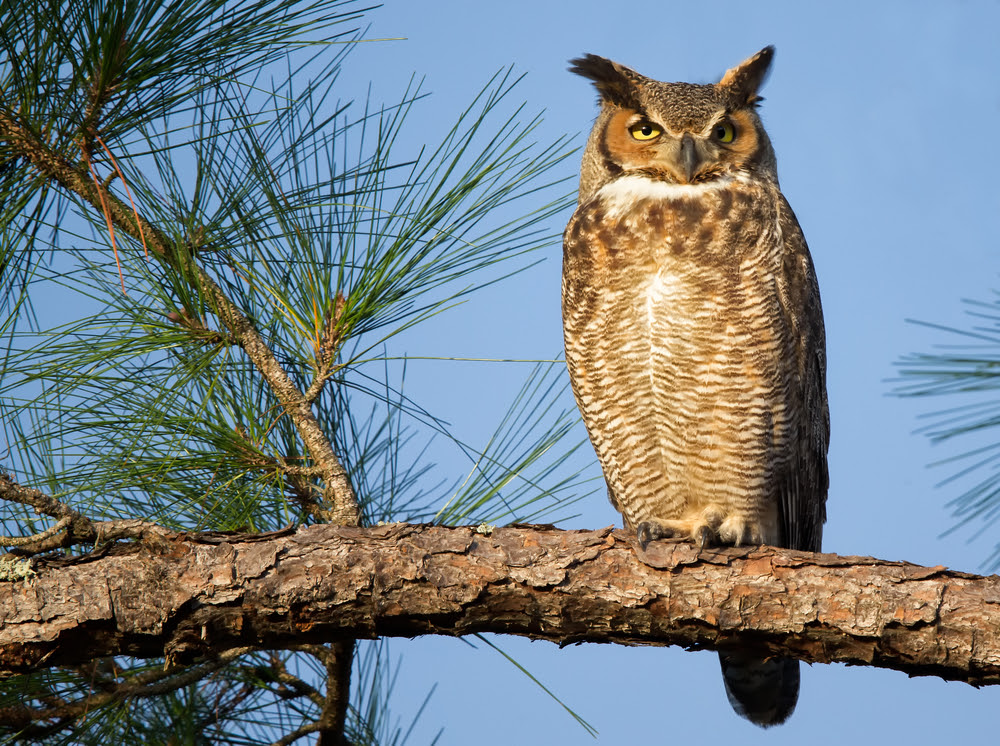Great Horned Owl, Bubo virginianus
Bill Rowe
Owls make up the order Strigiformes, one of the most distinctive and easily recognized groups of birds the world over. Nearly anywhere you go, there will be multiple species of owls around, but your chances of seeing one depend on both persistence and luck, since most of them are active mainly or solely at night. In Missouri we have three that are widespread and common all year, the largest being the Great Horned Owl. It is about the size of a Red-tailed Hawk and, as a hunter of small mammals, serves as the hawk’s nighttime equivalent, flying on ultra-soft wing feathers that make no warning sound. Like other owls, when a Great Horned eats a mouse or a rabbit, its system will digest all the parts that have food value and will compress the rest (bones, fur, etc.) into a small wad that it will later cough up; these dry “owl pellets” can be found at the bases of trees where owls roost and then analyzed to find out exactly what made up their diet. The full range of this highly adaptable owl covers nearly all of North America plus large parts of Central and South America, with an incredible range of habitats; its nearest relatives are the Snowy Owl of the Arctic and the eagle owls of the Old World.
IDENTIFICATION: A big owl with feather tufts that stick up on either side of its broad head, like horns; some call them “ear tufts,” but they have nothing to do with its ears, which are hidden under the feathers on either side of the face (as on all birds). The feathers around the eyes, or “facial disk,” are an orangey-brown color, and the eyes are bright yellow. Our other common large owl, the Barred Owl, has dark eyes and a round head with no tufts. The Great Horned Owl’s hooting, which can be heard any month of the year, carries a long way but sounds low, muffled, and irregular, like hoo…hoo-hoo-hoo…hoo, hoo, quite different from the Barred Owl’s sharp, barking hoots.
ST. LOUIS STATUS: A common year-round resident in forest and farmland, as well as parks, towns, and suburbs as long as they have some large trees.
Learn more and listen to the calls of Great Horned Owls here.




